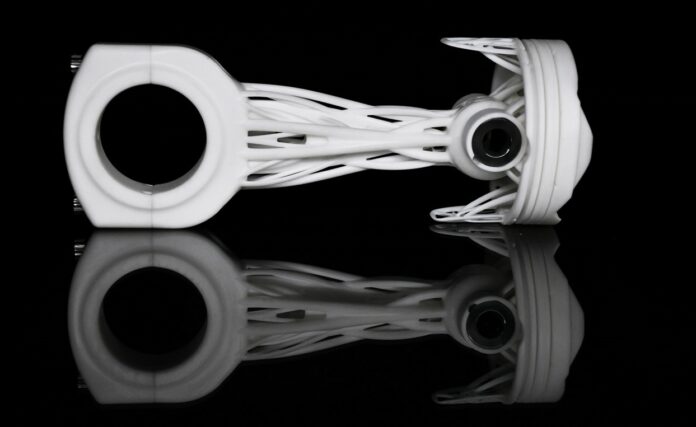“SPA is taking ceramic additive manufacturing and design for AM – DfAM – to the edge and beyond with their work on the Chaos Ultracar”, Haim Levi, XJet VP Strategic Marketing.
If you still have doubts, let me assure you: it makes sense to use ceramics to create automotive components, as they can provide protection between different engine parts, help to increase wear resistance, reduce friction, and improve heat shielding. In these applications, ceramic coating is often the way to go. We have never seen ceramic 3D printing used to create automotive components, until now.
As part of a project, Spyros Panopoulos Automotive (SPA) has fabricated a ceramic 3D printed piston for its Chaos Ultracar. The development of this “hyper fast” car has been announced two years ago, and from the very beginning, the racing car enthusiast and SPA Founder, Spyros Panopoulos, has made it clear that AM would be at the heart of this product development. So far, 78% of the body is 3D printed as well as other pivotal elements such as the engine block, camshaft and intake valves.
The part that raises our interest today is a ceramic 3D printed piston. Usually, it’s easy to see ceramic coating used to reduce surface temperature of the piston. In this specific case, Xjet’s ceramic 3D printing technology has been used to create the entire part.
To make this happen, the piston was first designed the ‘anadiaplasi’ way. It is Spyros’ proprietary method of design for AM in which a component takes its shape based on the forces acting on it. Material is minimised where it doesn’t support performance and added where reinforcement is needed, optimising weight while maintaining the strength and temperature resistance of the part – essential for any piston, but particularly testing in such a high-performing engine. The result is an organic complex shape that is light, yet strong. This technique is implemented throughout the Chaos Ultracar, a press report reads.
For the manufacturing part, Panopoulos worked with Lino 3D, XJet’s business partners in Greece, who used XJet Alumina material for the Chaos piston due to its strength, hardness, light weight, and almost total resistance to thermal expansion.
“Ceramic offers many advantages compared to other materials,” Panopolous comments, “Harder and stiffer than steel, more resistant to heat and corrosion than metals or polymers and weighing significantly less than most metals and alloys. XJet’s alumina parts will withstand the high temperatures expected to develop within the combustion chamber as well as on the fast-moving parts.”
Currently, SPA pursues speeds of over 500 kph and acceleration from 0 to 100 kph in 1.55 seconds for the Chaos. If the expert successfully achieves this objective, the company would be the pride owner of the fastest-revving production car engine ever seen, reaching up to 12,200 RPM and an astonishing 3,065 horsepower.
Remember, you can post free of charge job opportunities in the AM Industry on 3D ADEPT Media or look for a job via our job board. Make sure to follow us on our social networks and subscribe to our weekly newsletter : Facebook, Twitter, LinkedIn & Instagram ! If you want to be featured in the next issue of our digital magazine or if you hear a story that needs to be heard, make sure to send it to contact@3dadept.com






